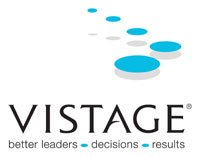|  Executive Tools Executive Tools
- Executive Summary
- Self Assessment Checklist
Expert Practices Articles
- Plan and Process
- The Planning Team
- The Planning Process
- The Mission Statement
- Goals and Objectives
- SWOT Analysis
- Implementing the Plan
Case Histories
- Use Historical Data to Inform Your Planning
- Use a "Balanced Scorecard"
- Educate Employees on Roles
- Create an OBM Leadership Team
- Schedule Ongoing Planning Sessions
- Track Strategic Goals Through Monthly Reports
- Enlist a Third-Party Facilitator
- Appoint a Plan "Engineer"
- Distribute a Pre-meeting Questionnaire
- Use Incentives to Involve Employees in Strategy
Tools & Analysis
- 12 Steps to Creating a Plan
- Strategic Planning Terminology
- Strategic Planning Workbook
- Strategic Planning Guide
Book List: Strategic Planning
Request
the Entire Best Practice Module: Strategic Planning
CEO Best Practice: Strategic Planning
Executive Summary
- Plan and Process
- The Planning Team
- The Planning Process
- The Mission Statement
- Goals and Objectives
- SWOT Analysis
- Implementing the Plan
Plan and Process
According to our best practices experts, an organization's strategic
plan should:
- Be ongoing and never ending
- Represent a shared vision of where the business is headed and
what is needed to get there
- Be integrated into a continuous business cycle
Request
the Entire Best Practice Module: Strategic Planning
The Planning Team
The strategic planning team should represent a broad spectrum of
segments within the organization.
- The ideal size is nine to 15 members with an outside facilitator.
- The CEO must serve as the strategic plan's "spiritual leader."
Choose planning team members based on merit, not rank or entitlement.
Request
the Entire Best Practice Module: Strategic Planning
The Planning Process
The strategic planning process consists of an orderly sequence
of activities, each contributing to the success of the whole. The
process should take place off-site, away from telephones, faxes,
etc., so that team members can "disengage" from day-to-day
operations.
Best Practices:
Practice creative thinking. Generate as many ideas a possible during
the early, "out-of-the-box" mode.
- Take a critical, unbiased look at what has worked before and
what hasn't.
- Identify the best of your past business practices and drop others
that have led to costly mistakes.
- Create four to six long-term goals linked to the organization's
vision.
- Devise strategies to achieve these goals and objectives.
- For each objective, create specific action steps.
Request
the Entire Best Practice Module: Strategic Planning
The Mission Statement
A mission statement describes what an organization does, what markets
it serves and what it seeks to accomplish in the future.
- The mission statement describes how the business serves customers
so they will underwrite its strategy.
- It serves as a guide for day-to-day operations and as the foundation
for future decision-making.
- For employees, a strong mission statement builds commitment,
loyalty and motivation.
Best Practices:
Request
the Entire Best Practice Module: Strategic Planning
Goals and Objectives
Strategic planning identifies an organization's goals and objectives.
Goals set the agenda and are global in nature. Objectives are more
specific and short-term.
- Goals identify areas where a major transition must occur (a
transition is described as "from … to").
- Objectives should be measurable, quantifiable and consistent.
Request
the Entire Best Practice Module: Strategic Planning
SWOT Analysis
A SWOT (Strengths/Weaknesses/Opportunities/Threats) analysis is
a tool for looking critically at the organization.
Best Practices:
- Draw upon a variety of perspectives -- from the CEO to employees,
customers and others who rely upon the business.
- Identify only those tangible and intangible assets and obstacles
that are tied to your company's long-term goals.
- Gather "competitive intelligence" by purchasing a
competitor's product, hiring one of its ex-employees or visiting
its booth at trade shows and conferences.
- Collect information on the Internet by viewing a competitor's
Web site and/or searching online publications.
Request
the Entire Best Practice Module: Strategic Planning
Implementing the Plan
The results of the strategic planning process must be integrated
with an organization's daily, weekly and monthly routines.
Best Practices:
- The CEO should develop a "stump speech" around the
plan -- promoting its values, mission statement, actions, etc.
-- and spread the word wherever possible.
- Enlist a support person (or "champion") for each strategy
and action.
- Organize top and middle managers into a "strategy team"
that become agents for change. The CEO should receive direct reports
from these teams on a regular basis.
- Avoid common implementation mistakes such as: (1) lack of communication
throughout the company; (2) treating the plan as something separate
and removed from the management process; and (3) choosing to make
intuitive decisions that clash with the plan's accepted objectives.
- Set up a feedback mechanism so that employees can respond to
the strategic plan.
- Share the plan with other stakeholders -- investors, customers,
alliance partners, etc.
- Keep the plan alive by monitoring its ongoing progress. Conduct
60- or 90-day senior management reviews. Implement objectives
by expanding employee skills through training and recruitment.
- Target sales to make the link between business strategy and
sales strategy.
- Reward success to increase employee motivation.
Request
the Entire Best Practice Module: Strategic Planning
|